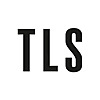“Oxford has been doing bibliography in one form or another for at least ten centuries”, Henry Woudhuysen observes in his introduction to this collection of essays to mark the centenary of the Oxford Bibliographical Society in 2022. The volume contrives to pay tribute both to the Society and to Oxford’s longer role in “doing bibliography”.
Some of the essays survey aspects of the Society’s history. William Whyte captures deftly the idiosyncrasies of some of the personalities who shaped its origins, including the “shy and saintly” P. S. Allen, the formidable bibliographer R. W. Chapman and C. H. Wilkinson, bibliophile and fellow of Worcester College, remembered for swimming “in a remarkable and noticeable costume … acquired from a barmaid in Amiens”. Paul Nash gives a detailed and meticulous bibliographical record of all the Society’s publications and information about their design and printing. This is enumerative and descriptive bibliography of a high order, made the more so by some crisp value judgements: “The results are ugly in the extreme, but legible”; “no excuse for the poor work”; “another, rather uninspired production”.
Other essays take up broader aspects of the role of the Society in bibliographical activities in Oxford. Julia Walworth considers its relationship to the activities of Oxford college libraries, particularly in efforts to engage in collaborative cataloguing projects aimed at making such collections more widely accessible. She details, through careful documentary research, the sometimes complex negotiations between the colleges and the Bodleian Library, in which the Society played a helpful part. Lucy Gwynn considers a significant strand of its publications, those that have reconstructed the libraries of notable figures such as Thomas Cranmer, John Locke, Richard Burton, Anthony Wood, Samuel Johnson and John Ruskin. This is an especially thoughtful analysis of the variant methodologies employed in such undertakings and their different limitations and achievements.
Several of the essays consider the broader implications of bibliographical activity in Oxford. Andrew Dunning surveys the history of the cataloguing of medieval manuscripts in college libraries from the medieval period to the present. In recent times, the Oxford Bibliographical Society has had a significant role in this form of scholarship through its publication of a number of catalogues of college manuscript collections. Dunning points to the antecedents of these catalogues, particularly H. O. Coxe’s work on medieval manuscripts in college libraries in the nineteenth century, and some of the more significant twentieth-century catalogues of individual libraries that antedate those published by the Society.
Ian Gadd moves beyond the University to give a succinct overview of the printed book trade in Oxford in its wider historical perspectives. The usefulness of his essay does, however, point up the lack of any accompanying essay on the book trade in Oxford in the medieval period. Nor is there any essay that aims to assess the range and nature of the Society’s contributions to descriptive and enumerative author bibliography, which formed much of its early work.
Such omissions are the more striking given the nature of the longest essay in this volume, its final one by James Raven, titled “Addressing Omission: Repositioning in bibliography”. This has little relationship to Oxford bibliography in general or to the work of the Oxford Bibliographical Society in particular, which is barely mentioned. Raven offers a series of wide-ranging ruminations about possible future directions for bibliographical study. Not all of these suggest themselves as fruitful lines of further enquiry, particularly the potential he proposes for the study of book smells. The essay gives the impression that it was written for a different occasion, one more appropriate to the range of often stimulating insights that it offers.
In its overall design, however, this well-edited volume generally provides a range of timely assessments that demonstrate the historical importance of the Society. The high quality of all the essays in the volume is a cheering demonstration of its continuing role in “doing bibliography” in the best ways. All concerned with the future wellbeing of bibliography will echo the hope of the current president, Adam Smyth, in his preface, that its work will go on combining “learning and deep research with fresh ideas and also new voices”.
A. S. G. Edwards is the editor of Medieval Manuscripts and their Provenance: Essays in honour of Barbara A. Shailor, 2024. He is writing a history of the trade in Middle English manuscripts
The post Catalogue of success appeared first on TLS.

 By Times Literary Supplement | Created at 2025-03-26 14:07:22 | Updated at 2025-04-04 05:13:03
1 week ago
By Times Literary Supplement | Created at 2025-03-26 14:07:22 | Updated at 2025-04-04 05:13:03
1 week ago







